Zephyrlilies (
Zephyranthes spp.), also called rainlilies, provide welcome color to the landscape from summer into autumn, often responding to rain by blooming. Grown from bulbs planted in fall, this Central American native is available in shades of peach, pink, white or yellow, depending on the species. Despite their delicate appearance, zephyrlilies are cold-hardy and thrive in full sun to partial shade. Moderately drought tolerant, they’re suitable for most landscapes throughout the southern half of the United States.
Note: All parts of this plant are poisonous.
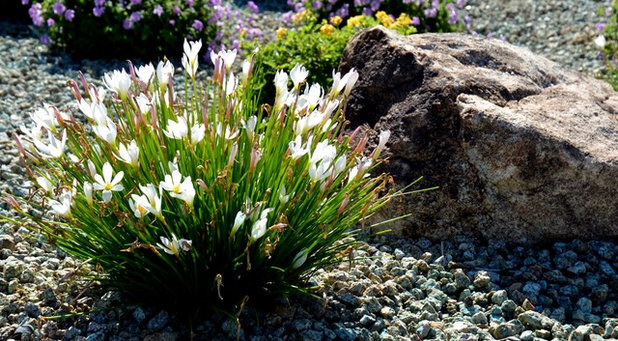
Noelle Johnson Landscape Consulting
Botanical name: Zephyranthes spp.
Common names: Zephyrlily, rainlily, zephyr flower, fairy lily
Origin: Native to Texas, Mexico and Central America
Where it will grow: Hardy to 0 degrees Fahrenheit, or minus 18 degrees Celsius (USDA zone 7; find your zone)
Water requirement: Moderately drought tolerant once established; water weekly in summer and every three weeks in winter
Light requirement: Full sun; in low-desert gardens, plant in partial shade
Mature size: 6 to 12 inches tall and wide
Benefits and tolerances: Moderately drought tolerant; deer resistant
Seasonal interest: Flowers from late summer into fall
When to plant: Plant bulbs in fall
Shown: Autumn zephyrlily (
Z. candida)
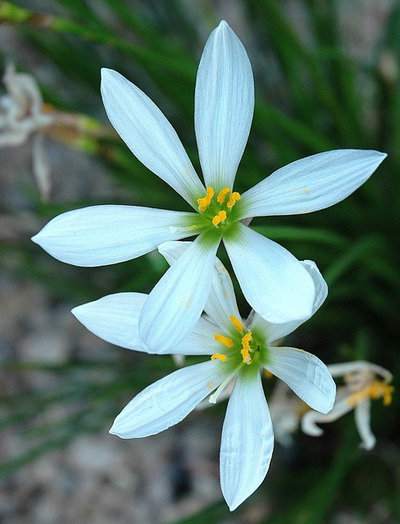
Noelle Johnson Landscape Consulting
Distinguishing traits. There are several species of zephyrlily, with flowers in white, pink, yellow and orange. The attractive bright green foliage has an upright growth habit that resembles grass.
Grown from small bulbs planted in autumn, the plants sprout new foliage in late summer and fall, coinciding with the bloom season.
Flowers are made up of six petals borne on 6- to 12-inch long stems. Numerous blooms appear in response to rain, making for a stunning display in the landscape.
Except for the evergreen white zephyrlily, shown, the foliage of other
Zephyranthes species usually dies to the ground during the heat of summer but quickly grows back in response to rain as well as the cooler temperatures of late summer and fall.
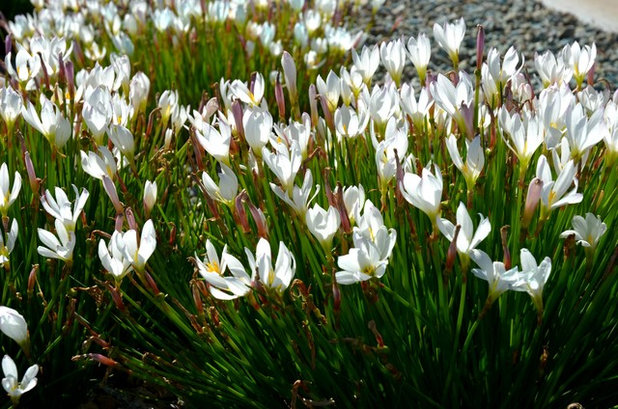
Noelle Johnson Landscape Consulting
Once blooming finishes in fall, the foliage starts to yellow. Wait to remove leaves until they’ve completely died back to allow them to provide nutrients for next year’s growth.
Shown: November blooms of autumn zephyrlilies
in Phoenix
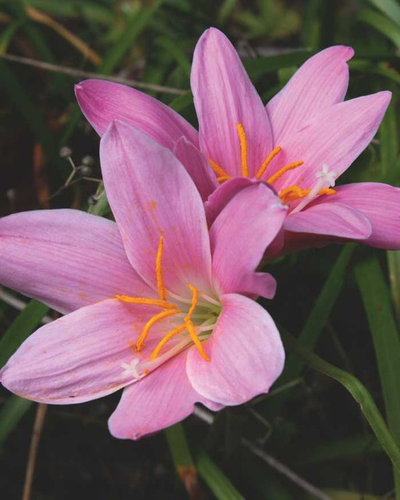
Southern Living Plant Collection
There are other species besides autumn zephyrlily,
including rosepink zephyrlily (
Z. grandiflora), shown
. Many hybrids are also available, including pale yellow ‘Ajax’
and soft orange ‘Batik’.
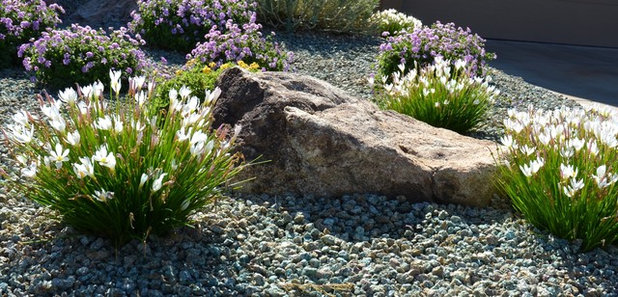
Noelle Johnson Landscape Consulting
How to use it. Zephyrlilies are suitable for both formal and informal landscapes, creating the greatest impact when massed. They are quite versatile and can be grown in raised beds or containers.
Plant them around boulders alongside autumn sage (
Salvia greggii), black dalea (
Dalea frutescens), coral fountain (
Russelia equisetiformis), Mexican honeysuckle (
Justicia spicigera) or purple trailing lantana (
Lantana montevidensis), shown, for a natural look.
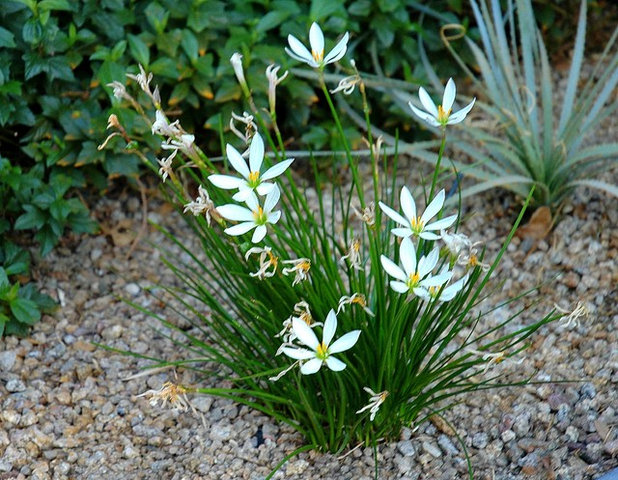
Noelle Johnson Landscape Consulting
For a more formal design, plant autumn zephyrlily where its evergreen foliage can add low-growing spiky texture to the landscape. Plant between straight rows of golden barrel cactus (
Echinocactus grusonii) or mescal ceniza (
Agave colorata) for a contemporary design.
Shown: Autumn zephyrlily
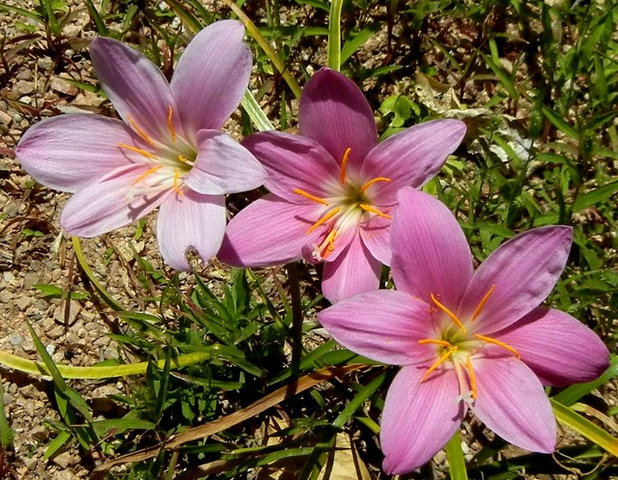
Noelle Johnson Landscape Consulting
Planting notes. Plant in the fall in a location that receives full sun to filtered shade (filtered shade is best in the low desert).
The soil should be well-drained and amended with compost at a ratio of 1 part compost to 1 part native soil.
Dig holes that are 4 inches apart and 2 inches deep. Add an all-purpose fertilizer at the bottom of each hole before planting.
Shown: Rosepink zephyrlily





